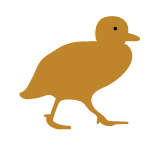This intensively-delivered course focuses on writing about practice-led research. Aimed at students working in the creative arts and design, the course introduces strategies and methods for experimenting with voice, structure, and content. Students will develop a critical awareness of how to think and argue through writing, as well as the skills and confidence required for making research public at an advanced level.
Students will conduct self-directed research to create a conceptual framework that extends the relationship between their research questions and creative practice. Articulating the methodologies that underpin the broader context of the student’s Higher Degree Research project, they will demonstrate a high level of critical awareness and evaluation of how research is written.
Students are encouraged to contact the course convenor to discuss their research.
Learning Outcomes
Upon successful completion, students will have the knowledge and skills to:
- independently engage in critical reflection, synthesis, and evaluation of modes of writing in relation to practice-led research;
- adapt and implement research methodologies to develop a platform for extending and redefining existing knowledge and professional practice;
- disseminate and promote new insights to peers and the community;
- conduct original, self-directed research to present reasoned, referenced, and structured arguments that constitute an original contribution to the field; and
- communicate complex ideas in both written and spoken forms.
Indicative Assessment
- Participation, including 10 minute oral presentation (10) [LO 1,2,3,4,5]
- Method workshop documentation and 500 word summary (20) [LO 1,2,3,5]
- Poster (20) [LO 1,2,3,4,5]
- Essay (5000 words) (50) [LO 1,2,3,4,5]
The ANU uses Turnitin to enhance student citation and referencing techniques, and to assess assignment submissions as a component of the University's approach to managing Academic Integrity. While the use of Turnitin is not mandatory, the ANU highly recommends Turnitin is used by both teaching staff and students. For additional information regarding Turnitin please visit the ANU Online website.
Workload
130 hours of total student learning time made up from:
a) 35 hours of contact: lectures and tutorials, delivered intensively; and
b) 95 hours of independent student research, reading and writing.
Inherent Requirements
Not applicable
Requisite and Incompatibility
You will need to contact the School of Art and Design to request a permission code to enrol in this course.
Prescribed Texts
Dumit, J. “Writing the Implosion: Teaching the World One Thing at a Time.” Cultural Anthropology Vol. 29 No. 2 (2014).
Copies of required readings will be posted on the Wattle site prior to the intensive.
Preliminary Reading
Barrett, E and Bolt B. (eds.) Practice as Research: Approaches to Creative Arts Enquiry. London: IB Tauris, 2007.
Carter, Paul. Material Thinking: The Theory and Practice of Creative Research. Melbourne: MUP, 2004.
Loveless, N. How to Make Art at the End of the World: A Manifesto for Research-Creation, Durham: Duke University Press, 2019.
Fees
Tuition fees are for the academic year indicated at the top of the page.
Commonwealth Support (CSP) Students
If you have been offered a Commonwealth supported place, your fees are set by the Australian Government for each course. At ANU 1 EFTSL is 48 units (normally 8 x 6-unit courses). More information about your student contribution amount for each course at Fees.
- Student Contribution Band:
- 12
- Unit value:
- 6 units
If you are a domestic graduate coursework student with a Domestic Tuition Fee (DTF) place or international student you will be required to pay course tuition fees (see below). Course tuition fees are indexed annually. Further information for domestic and international students about tuition and other fees can be found at Fees.
Where there is a unit range displayed for this course, not all unit options below may be available.
| Units | EFTSL |
|---|---|
| 6.00 | 0.12500 |
Course fees
- Domestic fee paying students
| Year | Fee |
|---|---|
| 2026 | $4200 |
- International fee paying students
| Year | Fee |
|---|---|
| 2026 | $5820 |
Offerings, Dates and Class Summary Links
ANU utilises MyTimetable to enable students to view the timetable for their enrolled courses, browse, then self-allocate to small teaching activities / tutorials so they can better plan their time. Find out more on the Timetable webpage.
Class summaries, if available, can be accessed by clicking on the View link for the relevant class number.
First Semester
| Class number | Class start date | Last day to enrol | Census date | Class end date | Mode Of Delivery | Class Summary |
|---|---|---|---|---|---|---|
| 3953 | 23 Feb 2026 | 02 Mar 2026 | 31 Mar 2026 | 29 May 2026 | In Person | N/A |


